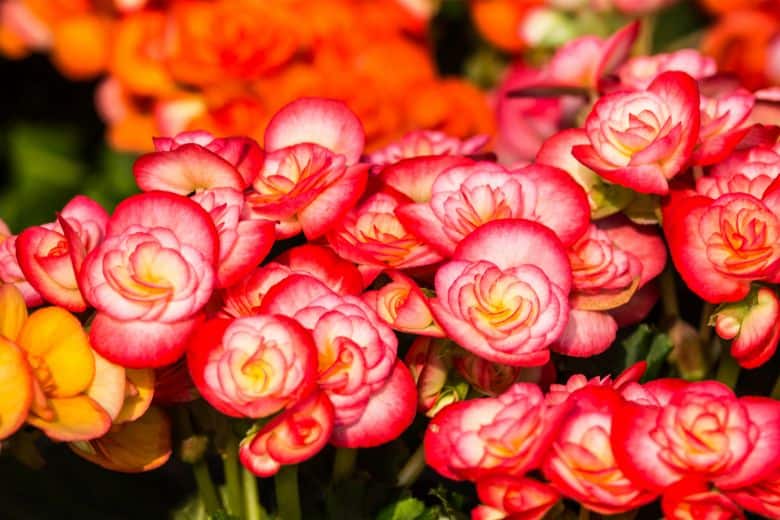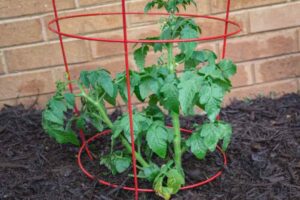
Begonias are a popular flowering plant that is easily grown indoors or outdoors. Collecting begonia seeds is a great way to save money when propagating begonias and is relatively easy to do. This guide will provide you with some tips on how to collect begonia seeds to help you get started.
You will need to identify the right kind of begonia to collect seeds from, when and how to harvest the seeds, and how to properly store the collected seeds. With the right knowledge and a bit of patience, you can collect and store begonia seeds that will provide you with beautiful blooms for many years to come.
Preparing the Plant for Seed Collection
As the growing season comes to an end, it is important to properly prepare the plant for seed collection. This includes all the necessary steps to ensure the desired seeds are collected in the most efficient manner.
Pruning the plant, removing any dead or diseased parts, and then deadheading can help to ensure the best quality seeds are collected.
Once more, pollinating the flowers can help in the seed formation process. With these steps, you can ensure that your plant is ready for seed collection and can help maximize the harvest of the desired seeds.
Harvesting Begonia Seeds
Begonias are one of the most popular flowering plants, and they come in a variety of shapes, sizes, and colors. Harvesting begonia seeds can be a fun and rewarding experience.
The process of collecting the seeds requires patience and a steady hand, but with the right techniques, you can successfully harvest begonia seeds for future use. Begin by carefully cutting the seed pods from the stem when they are light tan in color.
Place the pods in a paper bag and let them dry out. Once they are completely dry, collect the seeds and store them in an airtight container in a cool, dry place. With a little bit of effort, you can enjoy beautiful begonias for years to come.
Cleaning and Drying Begonia Seeds
Cleaning and drying begonia seeds is an important step for successful germination. The seeds are small and can be difficult to remove from the plant material, but with the right technique, you can easily clean and dry them.
The first step is to gently snap the seed pods off the begonia stems and then rub the pods between your fingers to remove the seeds.
Next, soak the collected seeds in water and then rinse them to remove any debris.
Finally, spread the seeds out and let them air dry for a few days before storing them in a cool, dry place. With these simple steps, you can easily clean and dry begonia seeds for future use.

Storing Begonia Seeds
Storing begonia seeds is a great way for gardeners to save money and have access to a wide variety of begonia varieties to choose from. When harvested correctly, begonia seeds can remain viable for several years.
Proper storage can ensure that your begonia seeds remain viable for even longer. To store begonia seeds, first, clean off any excess dirt or debris. Place the seeds in an airtight container such as a mason jar or plastic bag and store in a cool, dark place.
Make sure to label the container with the variety of begonia and the date it was harvested. If stored correctly, your begonia seeds will stay viable for years to come! So, don’t forget to store those begonia seeds!
Propagating Begonia Seeds
Propagating begonia seeds is an easy, economical way to add a little extra flair to your garden. Not only are begonia seeds incredibly affordable, they are also easy to grow.
All you need to do is sprinkle the tiny seeds on the surface of a moist potting mix, cover with a thin layer of soil, and keep the soil moist. In a few weeks, you’ll have a beautiful array of begonias with frilly petals in a variety of colors.
Propagating begonias from seeds is a great way to add texture and fragrance to your garden without breaking the bank. Whether you’re a beginner or an experienced gardener, it’s a fun and rewarding project that will bring you joy for years to come.
Troubleshooting Common Problems with Begonia Seed Collection
Begonia seed collection can be a difficult process, but it is possible to troubleshoot common problems. This blog post will provide tips on how to successfully collect, store, and germinate Begonia seeds.
It will also discuss the necessary environmental conditions and any potential problems that may arise along the way.
Additionally, it will offer advice on how to avoid common mistakes when collecting and storing Begonia seeds.
Finally, it will provide helpful information on how to troubleshoot any problems that may occur during the germination process.
With these tips, you’ll be able to improve your chances of success when collecting and propagating Begonia seeds.
FAQs About the How To Collect Begonia Seeds
What type of begonia can I collect seeds from?
Answer: You can collect seeds from any type of begonia, including wax begonia, tuberous begonia, and rex begonia.
When is the best time to collect begonia seeds?
Answer: The best time to collect begonia seeds is after the flowers have withered and the seed pods have split open. This usually happens in late summer or early fall.
How should I store begonia seeds until I am ready to use them?
Answer: You should store begonia seeds in a cool, dry, and dark place until you are ready to use them. You can also store them in a sealed container in the refrigerator.
Conclusion
Collecting begonia seeds can be a rewarding experience. It is a relatively easy process that can be done with minimal effort. Begin by collecting the begonia flowers when they are fully ripened and then dry them in a warm, dry place. Use a pair of scissors to carefully remove the seed pods from the flower, and then separate the seeds from the pods. Finally, store the seeds in a cool, dry place until you are ready to plant them. With proper care, begonia seeds can remain viable for many years.






